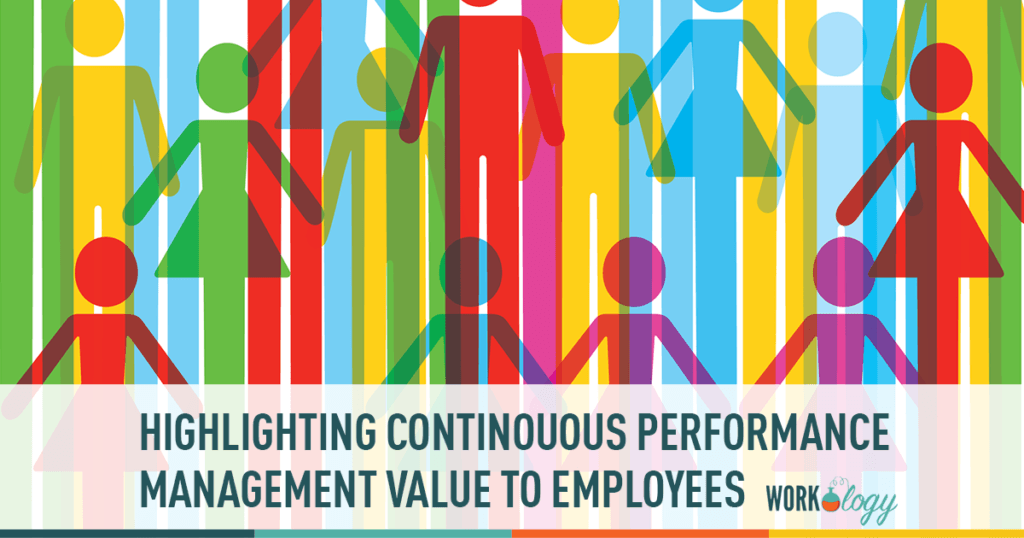Every HR professional is aware of the significant changes in the workplace. Organizations that are highly hierarchical and organized are almost entirely being replaced by more adaptable, flexible, and agile models built on cross-functional teams, whose work is driven by dialogues that occur up, down, and across the organization. Rethinking how we assess, coordinate, and support employee performance is necessary to get the most out of these kinds of teams, yet far too many companies continue to operate under an outdated conception of what “performance management” entails.
More and more HR and business leaders are realizing that annual performance reviews are obsolete, and that implementing processes that are rooted in continuous conversations, agile and transparent goals, and culture-based models for coaching and career development is vastly more effective for a modern workforce. But even with nearly 90% of HR professionals agreeing that a Continuous Performance Management® model is superior to an annual or bi-annual review process, transitioning to that model remains an organizational and technological challenge.
Operationalizing Continuous Performance Management successfully it requires solid processes, supported by robust technology that can facilitate these processes throughout complex organizations. This shift can be a complex one that not only requires adopting new technology, but also changing the way your company works from executives and managers down to your employees in the field. So how can you manage this complicated transition successfully? By focusing on the value of this new methodology to the employee, and helping them see that value in their everyday lives.
The Value of Motivation
Plain and simple: motivated workers are more efficient. When employees are motivated, they get their work done faster and with greater levels of collaboration, creativity and commitment. A motivated workforce goes above and beyond to do what is in the best interest of the organization and, ultimately, the bottom line. But while many organizations believe that exterior incentives, such as unlimited paid time off or catered lunches, attract and maintain employees, these benefits often have little impact on employee satisfaction. So, what truly motivates employees?
Emphasize Career Development
Motivation is tied to a future outlook. One of the key changes we made in our performance management program was transitioning from annual reviews that looked backward at traditional performance metrics to requiring our managers to have more frequent conversations with their reports that focus on career development. For example, rather than being asked to track overtime, our employees are now asked “how can we get you to the next level as a welder?
Simply using the phrase ”performance development” instantly shifted the conversation around the process to a more forward-looking, positive and employee-focused stance. This had a huge impact from an employee engagement standpoint. Rather than feeling like their managers are micromanaging them or questioning their work, our workers feel invested in and motivated to get the next level in their career, which translated to increases in employee performance.
Frequently Communicate Clear Expectations
It’s a strange truth, but many employees simply don’t know what is expected of them at work. Workers are more motivated and engaged when they are able to directly see the value that their work provides, and when they experience a sense of meaningfulness at work, so how do you ensure organizational alignment and foster that sense of meaningfulness?
A major factor is increasing the frequency of communication. Motivating employees is not a one-time endeavor, but needs to be continuously strengthened through regular, open and ongoing conversations between employees and their managers. The more often managers talk to their employees, the more motivation and performance increases within the workforce. Even quick, informal check-ins to address priorities boost employee engagement. A new wave of continuous performance management technologies allows managers to easily hold regular conversations with employees to ensure they know what they need to accomplish and how their work furthers the larger organization’s goals.
Provide Timely Feedback
Almost half of employees receive feedback from their managers only a few times a year or less. Not only do employees want clear expectations to be established, they also want to know how they are mapping to their career goals. Managers need to provide feedback in a timely manner to promote career development. A quarterly review cadence, vs. an annual review, enables managers to align employees’ individual career goals with the organization’s top priorities, ensuring the employee has a sense of purpose and business goals are met.
There is no silver bullet to motivating employees, however HR leaders and managers can directly incent employees by emphasizing career development, communicating clear expectations and providing timely feedback. It’s an ongoing process and won’t happen overnight. By shifting culture away from increased engagement and toward motivation, both employees and organization at large are better set up for success.








